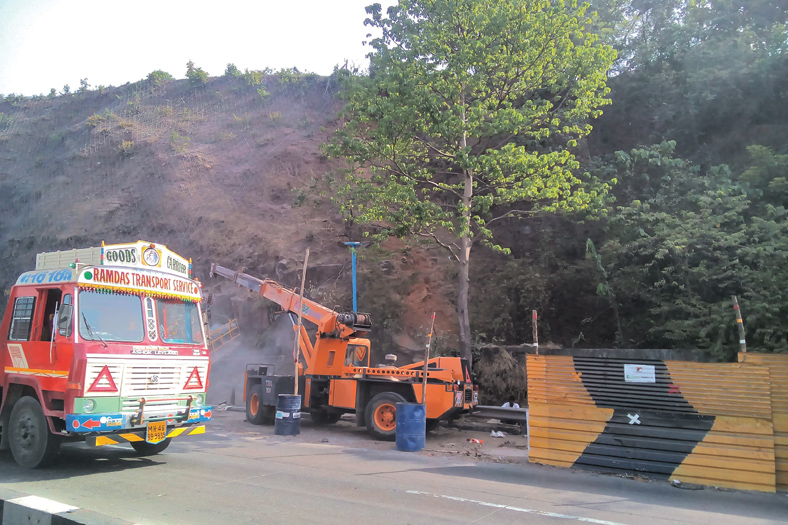Margin improvement necessity for Indian construction chemicals
While fragmentation in the construction chemical industry is likely to get addressed from inevitable consolidation in the market in coming years, immediate need for companies is to improve their margins and have a business model which provides expected margins consistently, experts from Tata Strategic Management Group explain
Construction Chemicals, as the name suggests, are chemical compounds used in construction activities. These compounds belong to specialty segment of the chemical industry and can be used either in existing construction projects or in new construction projects either to impart specific properties to the structures or to make construction more efficient. Based on end use applications, these compounds can be broadly classified into five categories.
A growing marketIndian construction chemicals industry currently stands at ` 3,600 crores and has grown at a CAGR of 17 per cent from 2007 to 2013. Admixtures constitute majority of the market with 42 per cent share. Flooring and waterproofing agents constitute 14 per cent share each. Chemicals for repair and rehabilitation constitute 12 per cent of the market while adhesives and sealants constitute the remaining 18 per cent of the market
Key growth driversGoing forward, the industry is expected to maintain its growth momentum driven by untapped potential of the market and growth in construction industry over the next 5-7 years. Also, increasing awareness and adoption of international standards would lead to usage of higher performance products. Moreover, changing regulatory environment which incentivises energy efficient or green buildings and discourages the usage of on-site concrete mixing in metros and tier 1 cities is further expected to increase demand.
As per TATA Strategic estimates, the industry is expected to grow at a CAGR ofapprox. 15 per cent till 2020 to reach ` 9,500 Cr. Growth rate can increase to CAGR of 20 per cent if certain regulation like off-site concrete mixing becomes mandatory.
Challenges still remainThe industry faces multiple challenges which can impact the growth rate of the industry. Consumer awareness in India is low regarding benefits of construction chemicals when used appropriately. High value products have limited demand and are used only by premium construction projects. Furthermore, industry lacks in relevant consumer standards for construction. All this has resulted in a under developed market in India when compared to other countries, such as China, which accounted for 42 per cent of the global construction chemicals consumption in 2012.
The one major challenge from the supply side is that the construction chemical industry is highly fragmented with the top 7 players accounting for ~50 per cent of the market; next 20 players ~25 per cent and the remaining 25 per cent comprises of small and unorganised players (Fig 2). Low capital investments, high growth rates and localised nature of the business are the key reasons for high fragmentation. Such situation along with absence of standards leads to price wars between manufacturers and lower margins for the overall industry.
Future PossibilitiesTATA Strategic expects the construction chemicals market to shift towards consolidation in the future. The market is expected to grow to 9,500 crores by 2020 with top 7 players accounting for 5,700 crores. With the presence of large MNCs, vying for their position in the fast growing market, we expect the awareness levels to improve. The number of players competing is expected to reduce and the industry is likely to move to an improved EBITDA margin levels
Strategic ImperativesWhile consolidation will happen over time, in the short to medium term, improving margins is the need for the sector to ensure sustainability of business. We have detailed below four key levers which can help companies improve their margins
Understand Value Chain
Companies need to understand the value chain in detail and explore how to position their products. Margins for a company can significantly increase if their products are sold in company’s own brand verses products being sold as generics.
Companies also need to evaluate where in the value chain they can provide value added products. There are several opportunities but success depends upon strength of company’s technical sales team and their brand recall across focus regions
Our estimates reveal that backward integration can improve the EBITDA margin by 5-10 per cent and therefore evaluating possibilities of backward integration will be a crucial factor in developing a more profitable business model.
Evaluate Operational CostsBoth direct and indirect costs need to be evaluated and benchmarked against industry standards. This will help identify specific areas of improvement for companies vis-à-vis overall industry and companies can focus their efforts on improving selected metrics. Such focused optimisation exercises yields better results in the short to medium terms.
Assess Product Portfolio
Companies understand that their product portfolio plays a critical role in determining the overall EBITDA margins. However, given the intense competition, it is imperative for companies to understand at a deeper level pricing strategy of their products. To achieve right pricing in market, several factors need to be understood such as price elasticity of their products vis-a-vis demand, any existing or upcoming discontinuities in the market, and available variants of their products
It is often seen that number of products sold by companies are too large. This leads to a large but ineffective portfolio. Companies need to move their business model to a portfolio which is in tune with the requirements of Indian market and has “just enough” products given companies capability to manufacture and serve the market.
TATA Strategic analysis shows that companies enjoyed higher EBITDA margins (14-18 per cent) when targeting speciality segments as compared to players serving only the major segments like Admixtures. Therefore, companies need to determine which specialty segments should be their focus and why
Evaluate Customer Segments
Not all customer segments have the same decision making pattern. Companies need to critically assess their focus customer segments and cater to segments which are willing to pay a premium consistently. A segment which may look attractive today may not be the same six months later if the entry barriers are too low. For eg: quality than cost and thus are willing to pay a premium for quality construction chemical products. TATA Strategic analysis shows that players focusing on these segments were able to achieve a higher EBITDA margin of 12-15 per cent.
Since Indian market has a relatively low base for construction chemicals, companies, while defining their focus customers segments also need to evaluate which other countries or geographies should they focus to ascertain critical mass which is required to make their business sustainable.
Way forwardThe construction chemical industry has shown a healthy growth in the past and is expected to continue this growth in the future. However, high industry fragmentation and lack of awareness among end users pose a considerable challenge for the companies. Low entry barriers and lack of standards create fly by night operators which depress the overall margins for the segment. While consolidation in the segment will happen over a period of time, immediate need for companies is to improve their margins and have a business model which provides expected margins consistently. TATA Strategic has identified four key levers to improve margins which are:
Understanding value chain
Operational costs benchmarking
Product portfolio optimisation
Focus customer segments.
Depending on companies’ current business model and capabilities, they can improve their profit margins by focusing on one or more of these levers.
About TATA Strategic Management GroupTata Strategic Management Group, setup in 1991, is the largest Indian owned Management Consulting firm. We enhance client value by providing creative strategy advice, developing innovative solutions and partnering in effective implementation.
Also contributed to the article, Keerthy P, Associate Consultant at TATA Strategic Management Group Chemicals Practice.
Authored by_
Manish Panchal, Practice Head – Chemicals, Energy, Supply Chain and SustainabilityTATA Strategic Management Group
Charu Kapoor, Principal – ChemicalsTATA Strategic Management Group
Binay Agrawal, Project Leader – ChemicalsTATA Strategic Management Group
Cookie Consent
We use cookies to personalize your experience. By continuing to visit this website you agree to our Terms & Conditions, Privacy Policy and Cookie Policy.










